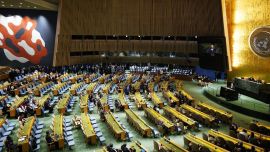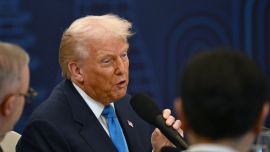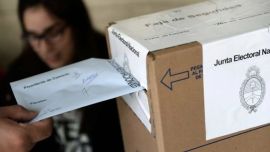If George Clooney has forever been telling us in recent years: “Nespresso – what else?”, his question has become increasingly less rhetorical in Argentina this year with a growing shortage of both capsules and machines since at least March – just one more example of the import squeeze reflecting the Central Bank’s shrinking dollar hoard.
Born out of the need to answer that “What else?” question, import substitution was conceived as the cure but there is a case for saying that it is equally the disease. All the elements in this vicious circle stem from the same period. Rather than any extravagant nationalist fantasy of “living off our own” self-sufficiency, import substitution arose out of the simple evaporation of world trade in the Great Depression as from 1929. Shortly afterwards, the monetary side of the equation changed permanently when Argentina went off the gold standard for the last time in 1933, followed by the creation of the Central Bank in 1935. In short, monetary intervention coincided with interruption of the normal trade patterns.
Many turns of the screw since then with the latest coming this week and taking the form of the dollars available ahead of delivery of the imported merchandise being slashed by three-quarters from a million to US$250,000 while the daily import quota without an increasingly delayed special permission has been hacked down from US$50,000 to US$10,000. The government thus moves ever closer to placing trade on a crude “cash on delivery” basis, which would be a total non-starter – given Argentina’s dismal credit ratings, importers would be hard put to find suppliers willing to wait weeks or months while their goods are shipped here before collecting a cent, always assuming that there are not further capital controls. Since around 90 percent of Argentine manufactured products contain at least some imported input (virtually total in some cases like the Tierra del Fuego electronics assembly plants), this bottleneck threatens to strangle any further rebound from the pandemic plunge.
There is another side to this story which only serves to deepen the vicious circle – with the dwindling reserves restricting the release of foreign currency to industrial needs and a mounting energy bill, the temptation to play all kinds of tricks with import and export invoicing becomes overwhelming. The authorities react to this by tightening capital controls, which slows the inflow of inputs and production at a time when there is more money chasing goods than ever with all the trillions of pesos being printed. But that monetary laxity only depletes the Central Bank’s dollars to the tune of almost a billion last month in order to tame the exchange rate.
Such shortfalls go back to my earliest days at the Buenos Aires Herald newsroom in 1983 and indeed long predate them. Even Argentina’s golden years in the 1880-1930 half-century were not free from intermittent foreign currency shortages. These did not recur in the following two decades due to imports being minimised by the Great Depression of the 1930s and World War II, which was followed by payment of the massive British and other wartime debts. But by the drought year of 1949 that money had all been spent with Central Bank reserves falling from 27 to seven percent of Gross Domestic Product in just the first three years of Peronist government. A plunge on that scale was not to be repeated until the presidencies of Cristina Fernández de Kirchner when reserves slid from 15.6 to 3.6 percent of GDP between 2009 and 2015 but the intervening six decades had their ups and downs too numerous to detail here (mostly downs without the gluts of the post-war years or the commodity boom of this century’s first decade).
Precarious Central Bank reserves were a constant all these decades but were subsumed into the much bigger story of debt crises while a trade surplus in around three-quarters of those years meant that essential imports rarely suffered. But Cristina Fernández de Kirchner’s defiance of holdout creditors, funded by eating up 80 percent of Central Bank reserves in the last six years of her presidencies, changed all that with trade no longer independent from the consequences of monetary policy. By 2012 this had led to Domestic Trade Secretary Guillermo Moreno (he of the PASO primary vote of 0.96 percent in Buenos Aires Province last month) insisting on a dollar’s worth of exports for every greenback released for import purchases even though Argentina was running an 11-digit trade surplus at the time. This policy resulted in such extreme absurdities as Japan’s Nissan auto plant becoming major wine merchants while olive oil came to have some dealers as implausible as the Corleone clan.
However deranged Moreno’s policies, there have been bigger and more chronic follies in Argentina’s approach to trade. Perhaps the biggest of them is at the other end of the trade balance – namely export duties (here Argentina is not unique in the world, as commonly believed here, but probably nowhere else is this handicap for the main foreign currency earners accompanied by such a monstrous exchange rate differential in a double whammy), the subject of one of the first columns this year.
But at least everybody hails the importance of exports, if only for their dollar-spinning aspects, even those who do everything to hamper or even block them as with this year’s beef export ban (also the subject of this space when first introduced in May). Imports have no such luck – the mercantilist philosophy of maximising exports and minimising imports, which faded in most of the world from the start of the industrial revolution, is alive and well here with purchases abroad viewed as the negative side of the ledger when not equated with social injustice. There is an unwillingness to accept the simple truth that countries are more reluctant to buy from countries which do not buy from them. A big trade surplus and a small volume is rarely superior to the reverse because it translates into a smaller economy and slower growth.
Grim as current times are for importers, the future looks worse – not only will the priority of holding down the exchange rate for the next five weeks at least deprive them of dollars even for vital inputs but when the lid does come off with a major devaluation, imports will become that much more expensive.



















Comments